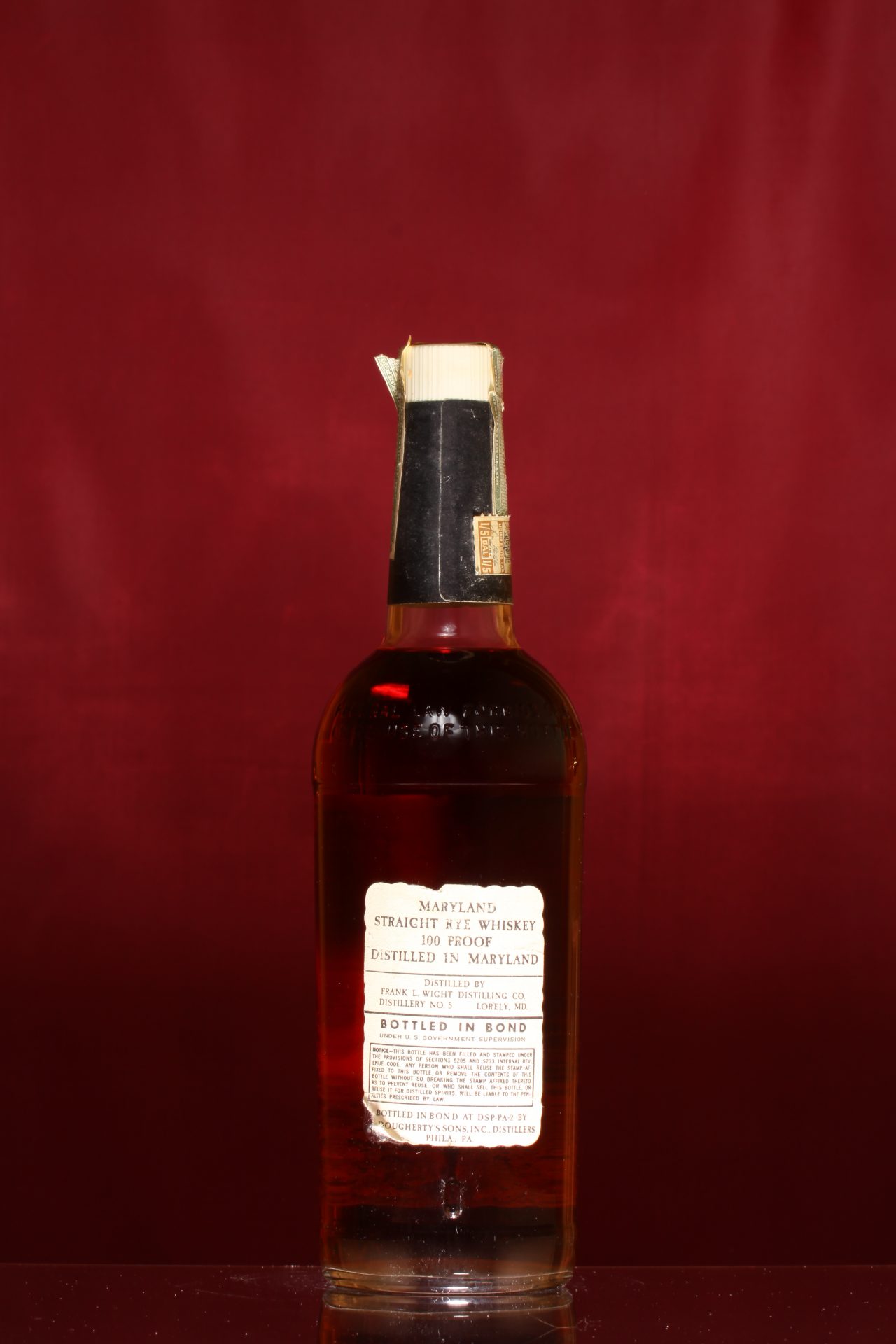LORELY
| Type: | WHISKEY RYE |
| Flavor: | Rye |
| Made From: | Distilled From At Least 51% Rye |
| Produced By: | FRANK L. WIGHT DISTILLING CO. |
| Origin: | Annapolis, Md. U.S.A. |
| Proof: | 100 |
| Age: | 15 |
| Importer: | Made In The U.S.A. |
| Location: | Annapolis, Md. |
During the war, grain and alcohol was diverted for military use, and blended whiskies began to make their appearance, which found favor with the public and meant that the days were numbered for straight rye whiskey.
The drinking public’s taste was changing in the immediate postwar years as they clamored for scotch, bourbon, Canadian blends and gin, conspiring to end Maryland rye’s popularity.
In 1941, the highly regarded firm of Frank L. Wight, which had produced Sherbrook and Old Reserve “Maryland Straight Rye” at its Loreley distillery, sold its business to Hiram Walker, which shocked Marylanders when it closed the distillery seven years later.
At the time, 15 other distilleries were still producing rye. In 1949, Zellic Cohen founded Majestic Distilling Co. in Lansdowne. After a few years, it dropped rye in favor of bourbon, vodka and gin, as demand for rye continued to fall.
One by one the rye distilleries closed, leaving by the 1970s only Standard Distillers Products Inc., whose now-demolished brick building and bottling works at Lombard and Commerce streets was across the street from the old News American building, itself now only a memory.
Standard Distillers bottled rye was distilled by Majestic and sold under the Pikesville label. Its slogan, which dated to 1937, was “Pikesville, the aristocrat of Maryland straight rye whiskies, more popular today than ever.”
Andrew W. Merle Sr., who had been with Meyer, Pitts Co., bottlers and wholesalers of rye before Prohibition, went back into the business when he established Standard Distillers. He was later joined by his son, Andrew W. Merle Jr., who had graduated from the University of Virginia and the Wharton School of the University of Pennsylvania.
Standard offered three varieties of Pikesville that it began bottling in 1936.
Basic Pikesville was four years old, with K&L being aged for seven years. The granddaddy of its line was a bonded 100-proof Pikesville that was recognizable by its black-and-red label.
Andrew Merle Jr., who served as president of the company for more than 20 years after his father’s death in 1965, was not terribly hopeful by the 1970s that Maryland rye would survive.
He laid down his last batch of Maryland rye at Majestic in 1973, and told a Sun reporter in 1975 that he had enough rye on hand to “last seven or eight years.”
By 1982, Merle had thrown in the towel and sold the building, and the Pikesville formula and the remaining inventory of 2,200 barrels were purchased by Heaven Hill-Evan Williams Inc. Production was shifted to the new owner’s Bardstown, Ky., plant.
Under federal law, rye whiskey must be distilled in Maryland to be called “Maryland rye.” The new owner bills its Pikesville as “Maryland or Potomac-style” rye.


